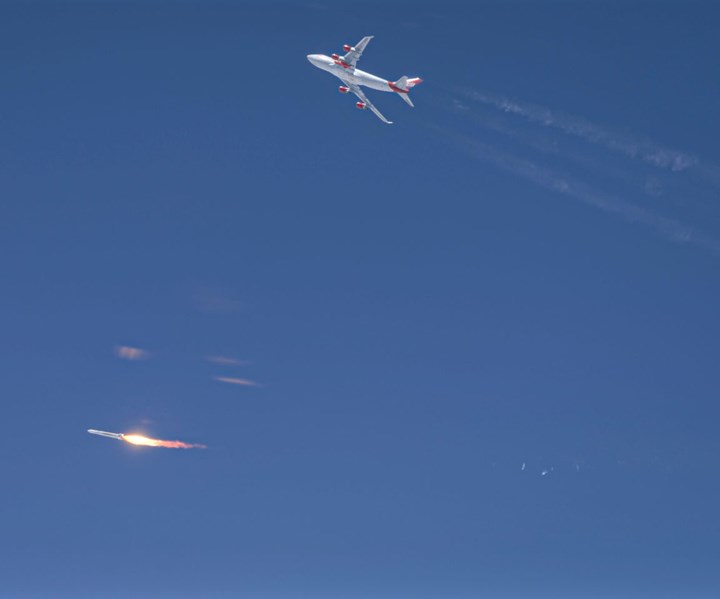Anomalies force Virgin Orbit to terminate LauncherOne test
Despite the termination, the test flight provided data necessary to make adjustments for future launches.

Source | Virgin Orbit
Satellite launch company Virgin Orbit (Long Beach, Calif., U.S.) conducted a launch demonstration on May 25 of its LauncherOne rocket — complete with filament-wound composite propellant tanks — over the Pacific Ocean, just off the California coast. The company successfully completed all of its pre-launch procedures, including the captive carry flight out to the drop site, clean telemetry lock from multiple dishes, a smooth pass through the racetrack, terminal count and a clean release.
After being released from its carrier aircraft (Cosmic Girl), LauncherOne successfully lighted its booster engine — the first time the company had attempted an in-air ignition. An anomaly then occurred early in first stage flight and the mission was safely terminated. Virgin Orbit did not identify the cause or nature of the anomaly. The carrier aircraft, Cosmic Girl, and all of its crew landed safely at Mojave Air and Space Port, concluding the mission.
“Our team performed their pre-launch and flight operations with incredible skill today. Test flights are instrumented to yield data and we now have a treasure trove of that. We accomplished many of the goals we set for ourselves, though not as many as we would have liked,” says Virgin Orbit CEO Dan Hart. “Nevertheless, we took a big step forward today. Our engineers are already poring through the data. Our next rocket is waiting. We will learn, adjust, and begin preparing for our next test, which is coming up soon.”
The company’s next rocket is in final stages of integration at the company’s Long Beach manufacturing facility, with a half-dozen other rockets for subsequent missions not far behind. Virgin Orbit’s decision to begin production of multiple rockets well in advance of this test flight will enable the team to progress to its next attempt at a significantly faster pace, shortly after making any necessary modifications to the launch system.
Related Content
-
Combining multifunctional thermoplastic composites, additive manufacturing for next-gen airframe structures
The DOMMINIO project combines AFP with 3D printed gyroid cores, embedded SHM sensors and smart materials for induction-driven disassembly of parts at end of life.
-
Plant tour: Albany Engineered Composites, Rochester, N.H., U.S.
Efficient, high-quality, well-controlled composites manufacturing at volume is the mantra for this 3D weaving specialist.
-
Recycling end-of-life composite parts: New methods, markets
From infrastructure solutions to consumer products, Polish recycler Anmet and Netherlands-based researchers are developing new methods for repurposing wind turbine blades and other composite parts.











.jpg;maxWidth=300;quality=90)

